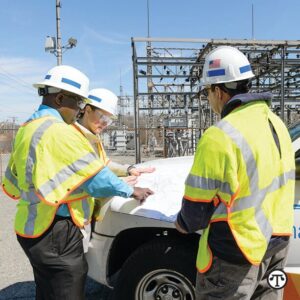 (NAPSI)—Addressing climate change is an all-hands-on-deck undertaking. It requires a smarter, stronger, and cleaner energy grid that provides affordable, reliable power when and where people need it. The grid of the future will have to be at least twice the size of what it is today—most likely even bigger.
(NAPSI)—Addressing climate change is an all-hands-on-deck undertaking. It requires a smarter, stronger, and cleaner energy grid that provides affordable, reliable power when and where people need it. The grid of the future will have to be at least twice the size of what it is today—most likely even bigger.
That means jobs—thousands and thousands of them across a wide variety of industries, from manufacturing technology, such as batteries and wind turbines, to electric vehicle construction and maintenance to consumer sales. The impacts on the workforce across the state and nation, and the economic effects on local communities, will be significant.
According to a 2023 U.S. Department of Energy (USDO) employment study, the energy workforce grew by nearly 300,000 jobs over the previous year—a faster rate than the overall U.S. workforce. Clean energy jobs specifically grew by 114,000, with every state seeing growth.
These new jobs present an opportunity to diversify the energy workforce and open doors to individuals who might not have previously considered the sector for a career. Women made up more than half of the energy jobs added last year, according to USDOE, and veteran employment outpaced that of the overall U.S. economy.
Examples of jobs necessary for a successful clean energy transition include:
- Offshore wind farm servicers
- Renewable energy engineers
- Solar panel installers and technicians
- Solar sales representatives
- EV production technicians
- EV charging station maintenance technicians
- Sustainable construction workers
- Robotics maintenance workers
The federal government offers a wealth of clean energy workforce development assistance. That includes a Clean Energy Corps with opportunities for engineers, attorneys, public policy specialists and other professionals, as well as career mapping tools that help people understand the roles available across energy sectors and their skills requirements.
New York is third in the nation for the most clean energy jobs, according to national business group E2, and state officials anticipate significant job creation in the coming years to help support climate goals. As of 2022, there were 165,200 clean energy jobs across the state.
The state Climate Action Council sees the potential for an additional 189,600 net jobs to be created by 2040. Resources such as New York State Energy Research and Development Authority’s (NYSERDA) Clean Energy Workforce Development and Training platform provide labor opportunities to New Yorkers and organizations interested in contributing to the clean energy future.
And the state aims for a more robust, resilient, and reliable grid to enable more electrification and renewable power sources, utilities including National Grid also play a key role in creating economic opportunities in the clean energy future.
The Grid Collective supports this work with training through the Business Performance Institute (BPI) and other certified sites to help workers gain skills that align with New York’s clean energy goals and allow them to take advantage of green economic opportunities at both the city and state level. That’s in addition to workforce training programs and partnerships like:
- Coordination with five free SUNY Online Training Centers to provide young people more resources for their future education and careers, including $3 million in gateway grants to students transitioning to the working world;
- Certified energy efficiency training in incubation and accelerator programs in partnership with Ascend Long Island and Bloc Power; and
- Grid for Good programming through which National Grid employees volunteer to help connect young people with employment opportunities and green technology job training.
Ultimately, with the right workforce in place, New York—and the nation—can make major strides in tackling the climate crisis and providing an equitable, economically viable, and reliable energy future.
“From Montauk to Buffalo, the clean energy transition will impact every single New Yorker, and our ability to attract and train a new generation of workers is the key to ensuring this undertaking is a success,” National Grid New York spokesperson Karen Young said. “Our focus is on providing equitable access to jobs in the clean energy industry and ensuring all customers maintain reliable, affordable access to energy now and into the future.”
Learn More
For further facts, visit www.nationalgridus.com/project-c/Our-Pillars/Workforce-Development and www.nationalgridus.com/project-c/Connect-as-Local-Leaders-and-Businesses/The-Grid-Collective.
